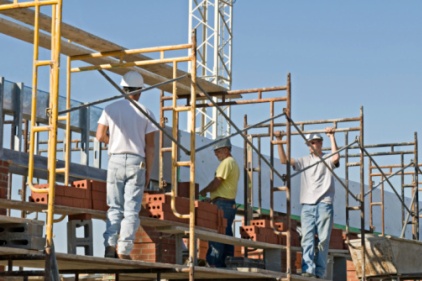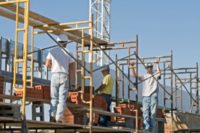 OSHA has announced that it will extend for three months its temporary enforcement measures in residential construction fall protection – to March 15, 2013.
OSHA has announced that it will extend for three months its temporary enforcement measures in residential construction fall protection – to March 15, 2013.
Those measures include priority free on-site compliance assistance, penalty reductions, extended abatement dates, measures to ensure consistency, and increased outreach. OSHA says it has performed more than 3,000 on-site visits, conducted close to 1,100 training sessions and delivered close to 500 presentations in an effort to assist employers in complying with the new directive.
A variety of educational and training materials on the subject are available at residential construction and the Fall Prevention Campaign.
Fatalities from falls are the number one cause of workplace death in construction.
An ongoing study on fall prevention in residential construction currently being conducted via the Center for Construction Research and Training (CPWR) notes that there are a number of factors responsible for construction falls, including training and behavior, employer practices and safety culture, and the availability of fall prevention and fall arrest equipment.
Among the findings:
- Most apprentices want direct mentorship and feedback. However, foremen say they are uncomfortable in giving positive feedback.
- Foremen are unclear where OSHA standards end and company policy begins. They feel a constant need to juggle safety with production and find it difficult to routinely follow fall prevention methods.
- Inexperienced apprentices want senior carpenters to show them how to apply what they learned in school to specific work situations, but apprentices see a disconnect when senior carpenters perform unsafe acts.
- Apprentices say toolbox talks could be more helpful if they were relevant to actual work tasks.
The researchers, led by Bradley Evanoff, MD, MPH, determined that fall prevention technologies to protect workers during roof truss layout and installation can be effective. After piloting the “wall-walker” hanging scaffold system at 15 worksites, they found fall risks decreased due to less work from ladders and less walking on the truss.
“Most crew members found the system easy to use,” the researchers noted.



